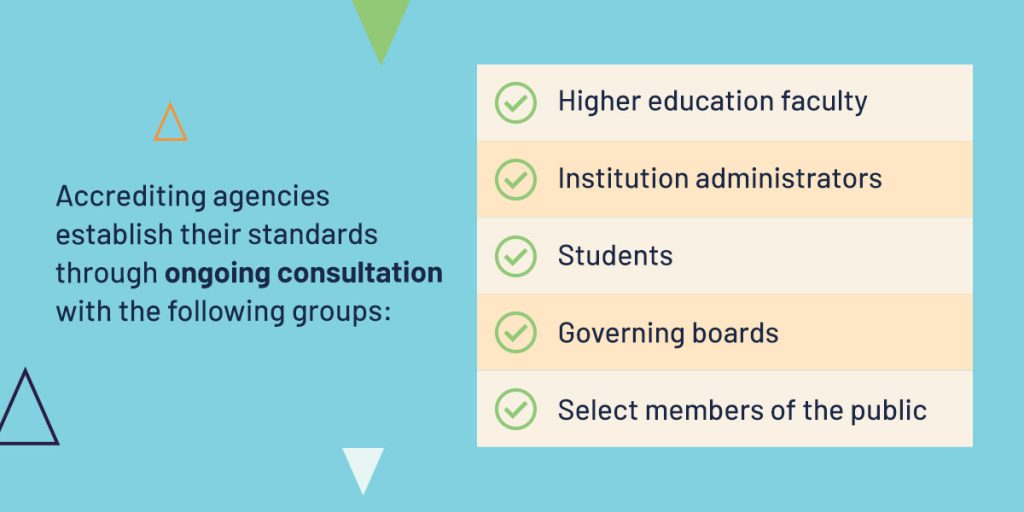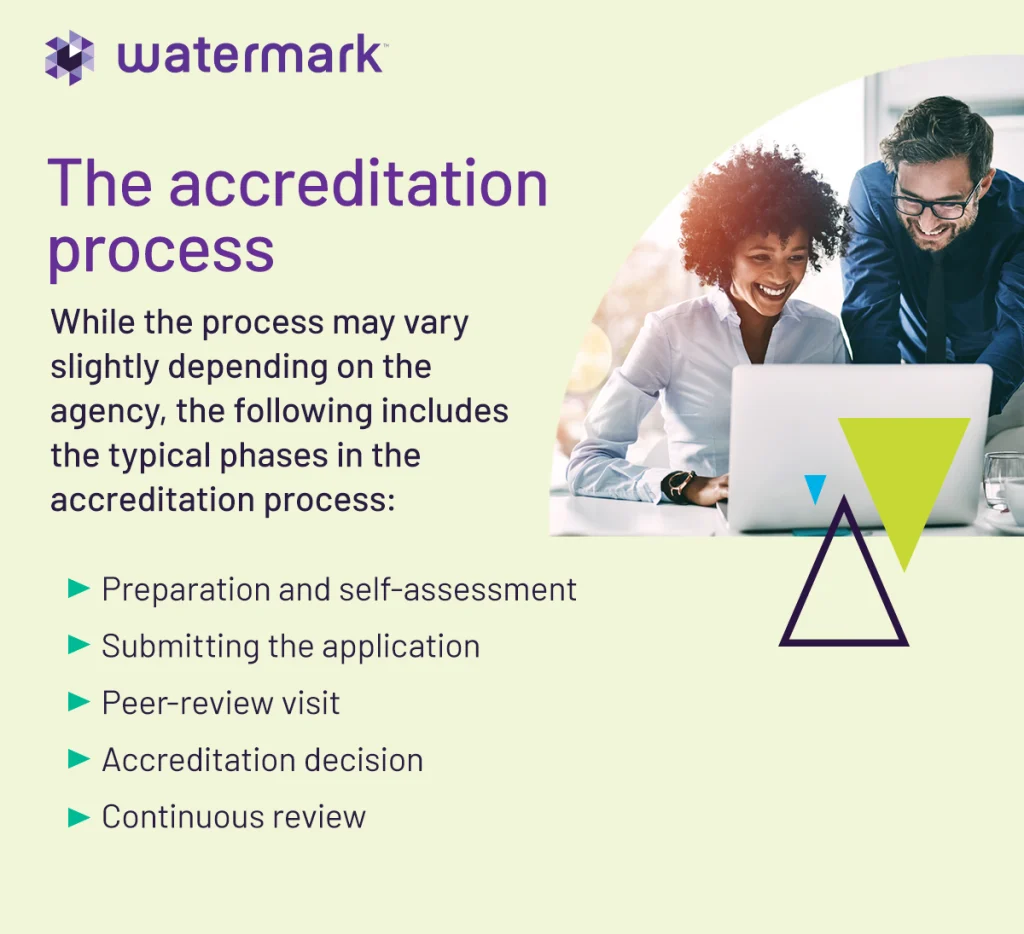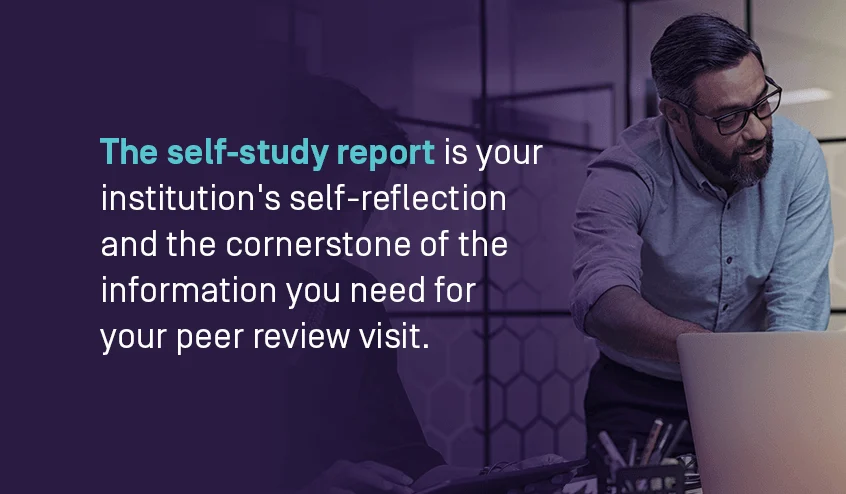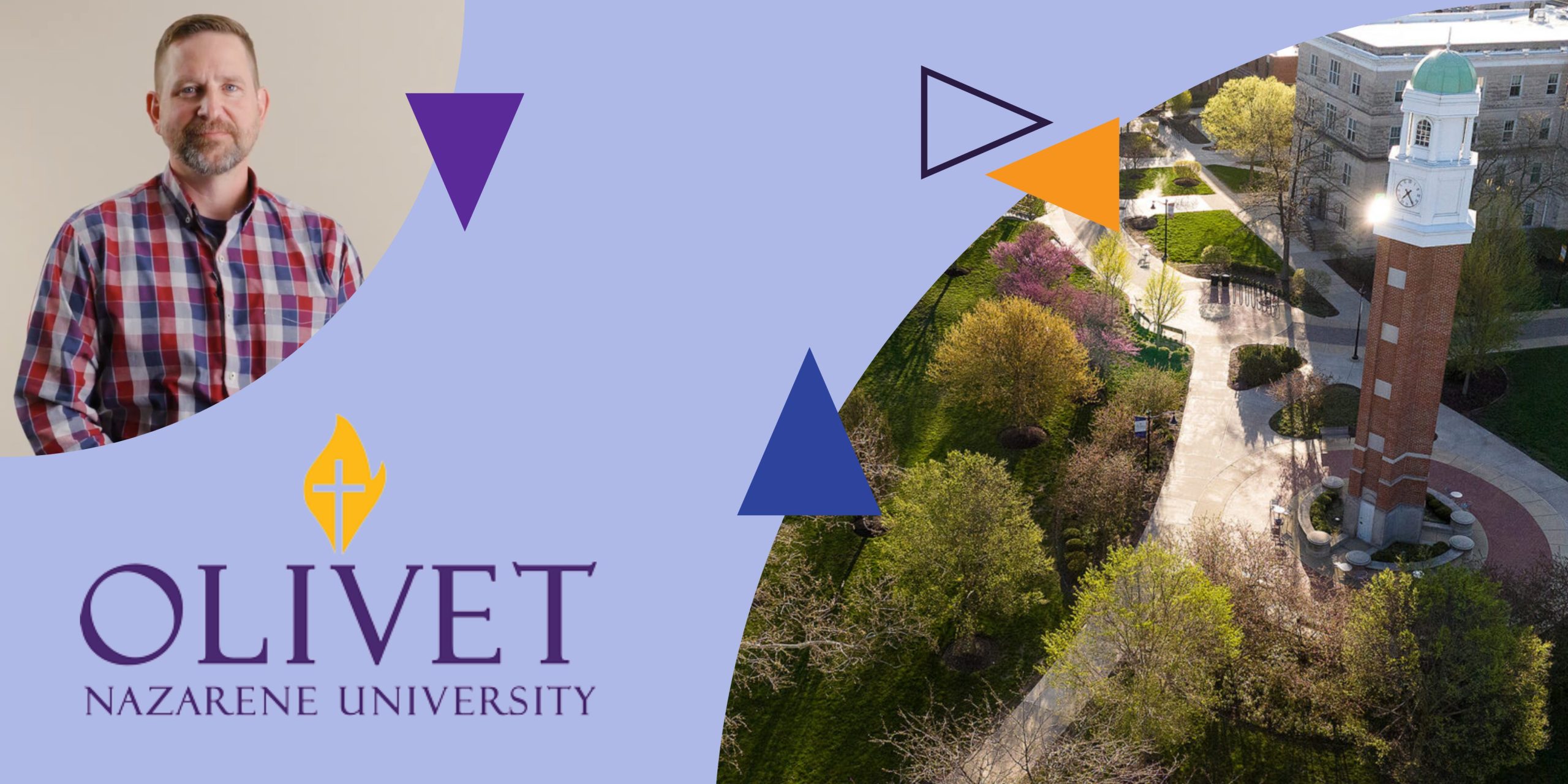
Accreditation is a meaningful affirmation to the general public that your college or university meets high standards. By understanding the full process, institutions can increase their chances of reaching this notable status.
In this article, we’re breaking down the meaning of accreditation and exploring the various agencies that extend it to higher education institutions. Read on to learn more about the higher ed accreditation journey.
What is accreditation in higher education?
Accreditation is the primary means of signifying that a higher education institution provides students with a quality education. Its main purpose is to help prospective students and their families, as well as government officials, determine if a program is credible and well established.

The importance of accreditation extends beyond student decision-making. Proper accreditation is a prerequisite for both state and federal entities to offer grants or loans.
Likewise, some states require an institution to have accreditation before allowing their students to participate in state licensure examinations for occupations such as:
- Teaching.
- Law.
- Therapy.
The Council for Higher Education Accreditation (CHEA) oversees all accrediting organizations and ensures that their processes are consistent in terms of:
- Academic quality.
- Improvement efforts.
- Accountability expectations.
- Eligibility standards.
Types of accreditation
Accreditation is divided into two main types — national and institutional. These help higher education institutions demonstrate that they offer an exceptional learning experience and meet standards set by a certified agency. Let’s explore some of the major differences between national and institutional accreditation.
National accreditation
National accreditation agencies approve higher education institutions that offer certifications and degrees. Nationally accredited schools are typically vocational institutions, religious institutions, career programs, or industry-specific certifications.
This accreditation type focuses more on programs and departments within an institution rather than the entire institution. This may be a valuable option for institutions looking to allow students to transfer credits to another institution when needed. This is because nationally accredited institutions recognize credits from other nationally accredited institutions.
Institutional accreditation
Institutional (formerly regional) accreditation extends approval to nonprofit and state-owned institutions and is a widely recognized and esteemed accreditation type. Accredited institutions have a more selective admissions process and stricter admission standards. Institutional accreditation agencies also award the entire institution, including off-campus and main instructional sites.
There are six institutional accrediting organizations recognized by CHEA:
- Higher Learning Commission (HLC)
- Northwest Commission on Colleges and Universities (NWCCU)
- Southern Association of Colleges and Schools Commission on Colleges (SACSCOC)
- New England Commission of Higher Education (NECHE)
- Middle States Commission on Higher Education (MSCHE)
- WASC Senior College and University Commission (WSCUC)
Higher ed accrediting organizations
There are numerous higher ed accrediting agencies that provide accreditation for different career fields. Here are seven common ones:
- Association to Advance Collegiate Schools of Business (AACSB): This organization’s accreditation processes are ISO 9001:2015 certified and offer accreditation for business and accounting programs that offer undergraduate and graduate degrees. Institutions wanting this accreditation must demonstrate a commitment to quality curriculum development, learner success, teaching, and research.
- Council for the Accreditation of Educator Preparation (CAEP): This accreditor reviews departments and institutions that prepare educators. These institutions must demonstrate program quality and continuous improvement to strengthen student learning.
- Association for Advancing Quality in Educator Preparation (AAQEP): This accrediting agency aims to assure quality educator preparation by evaluating educator performance, professional competence and growth, program practices, and program engagement in system improvement.
- The Accreditation Board for Engineering and Technology (ABET): ABET accreditation may be granted to programs in engineering, applied and natural science, computing, and engineering technology that meet the quality standards of the particular profession.
- Liaison Committee on Medical Education (LCME): LCME accreditation may be valuable to medical education programs leading up to the M.D. degree in the U.S. It has 12 standards and reviews aspects such as institution mission, curricular content and management, academic support, faculty preparation, and leadership and administration.
- Accreditation Commission for Education in Nursing (ACEN): ACEN provides specialized accreditation for all levels of nursing education and transition-to-practice programs. Peer evaluators perform the evaluation during an in-person site visit.
- Commission on Collegiate Nursing Education (CCNE): The CCNE accrediting agency aims to enhance the integrity and quality of baccalaureate, residency/fellowship, and graduate nursing programs.
Who are the accreditors?
In most countries across the world, governments are responsible for extending quality assurance for their higher education institutions. In America, accreditors are private organizations that are not part of the U.S. government.
CHEA provides a complete directory for accrediting agencies recognized by CHEA and the Department of Education where you can learn more about each organization. The list includes the following categories:
- National faith-related accrediting organizations: These organizations may provide accreditation to institutions and programs offering diplomas, certificates, or baccalaureate, graduate, or associate degrees that aim to prepare students for ministries, church-vocational, biblical, and general studies.
- National career-related accrediting organizations: These organizations may accredit whole vocational and professional institutions, which are often non-degree and for-profit.
- Institutional accrediting organizations: CHEA recognizes the Distance Education Accrediting Commission (DEAC) as an institutional accreditor that may accredit institutions offering programs at a distance of 51 percent or more.
- Programmatic accrediting organizations: CHEA recognizes numerous programmatic accrediting organizations, such as CAEP, AAQEP, nursing, and health care management.
You can also find the Department of Education’s accredited schools directory on its website.
How does accreditation work?
Organizations that extend accreditation operate by first developing rigorous standards that higher education institutions must meet. The agency reviews prospective institutions or programs via a thorough vetting process before awarding accreditation.

Accrediting agencies establish their standards through ongoing consultation with the following groups:
- Higher education faculty
- Institution administrators
- Students
- Governing boards
- Select members of the public
The standards they set intend to address the following:
- Student achievement
- Faculty
- Curriculum
- Support for students
- Financial capacity
- Additional details related to the process will depend on the particular agency. However, there is a general process that an accrediting agency follows.
The higher ed accreditation process

The university accreditation process typically lasts one-and-a-half to two years after submitting the application. The size and scale of the educational institution can impact how long it takes for approval.
While the process may vary slightly depending on the agency, the following includes the typical phases in the accreditation process:
Preparation and self-assessment
The first step in gaining accreditation is reviewing the accrediting agency’s specific standards. The higher education institution must understand these prerequisites and use them to thoroughly assess their operations. They can then refine any areas that are not satisfactory and make the necessary operational changes.
The university should aim to meet all standards prior to submitting their application. Doing so will help ensure they are eligible and ready for the next step toward approval.
Submitting the application
Once an institution feels it meets all standards set forth by the accrediting agency, its board can begin the application process. The institution’s accomplishments are often among the most important materials to include.
The application should demonstrate how and why the university is worthy of accreditation. Its format may vary depending on the agency, and most accrediting bodies will also require the payment of an application fee when submitting.
Peer review visit
The accrediting organization will review the application to ensure the prospective institution meets all necessary criteria. If the agency approves the application for accreditation candidacy, the next step is a peer-review visit.
A professional from the accrediting team will come to the institution’s campus for further investigation into its quality. They will observe and validate the information shared in the application to affirm the university is eligible for accreditation.
Accreditation decision
After the accrediting body visits, they will evaluate the information they gathered and what they observed to determine whether or not the higher education institution meets all standards.
In some cases, the agency will follow up with suggestions for the university, or they may provide ongoing support to help the institution better comply with their criteria.
The agency will then reach its decision to either extend accreditation or deny it.
Continuous review
When an institution achieves accreditation status, the agency will conduct ongoing reviews. The review process helps ensure the institution continues to uphold all quality standards.
Accreditation policies
Each accrediting body has its own policies. There are a few key procedures that every agency outlines for its prospective and current higher education institutions.
Learn more about the following accreditation policies and how they often work:
- Fees: An accrediting organization will likely charge institutions fees to apply. When it is time for on-site evaluations, universities will also pay to help cover the visit’s costs. An annual fee for maintaining accreditation is also typical.
- Renewal: Most accrediting organizations will require an institution to complete and submit an annual report in order to renew accreditation. The report ensures the university continues to meet all standards and maintains its quality educational offerings.
- Probation: Accredited institutions must participate in ongoing improvements. If they do not meet the standards set forth by the agency, they could face a probation period to get operations back on track.
- Sharing: Another common policy set forth by accrediting agencies is sharing accreditation. The institution will typically post its status on its public documents and its official website.
Accreditation software from Watermark
Is your higher education institution looking to achieve accreditation? Our assessment and accreditation management software, Watermark Planning & Self-Study, unifies planning, assessment, and outcomes in one centralized hub.
Our software enables institutions to boost data transparency and harness the power of accreditation-readiness tools. Planning & Self-Study allows your college or university to better manage assessment planning. It also supports a collaborative self-study process with custom report templates and control over its contributors. We make it easy to foster collaboration across your entire campus and monitor your adherence to accreditation standards.
Interested in learning more? Request a demo of our accreditation solutions today.

©️2024 Watermark Insights, LLC or its affiliates. All Rights Reserved. Other trademarks, including Accreditation trademarks, may be trademarks of their respective owners. This article is for information purposes only. Watermark believes the information in this article is accurate as of its publication date, and the information contained herein is subject to change without notice. Watermark is not affiliated with the Accreditor and the Accreditor did not participate in the creation of this report. Watermark makes no warranties, express or implied, in this report.















































































































































































































































































































































































































